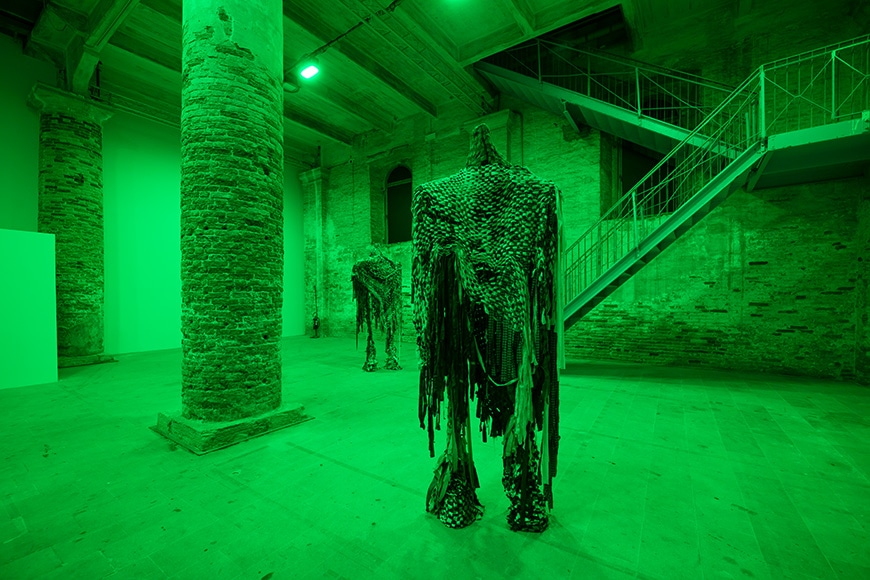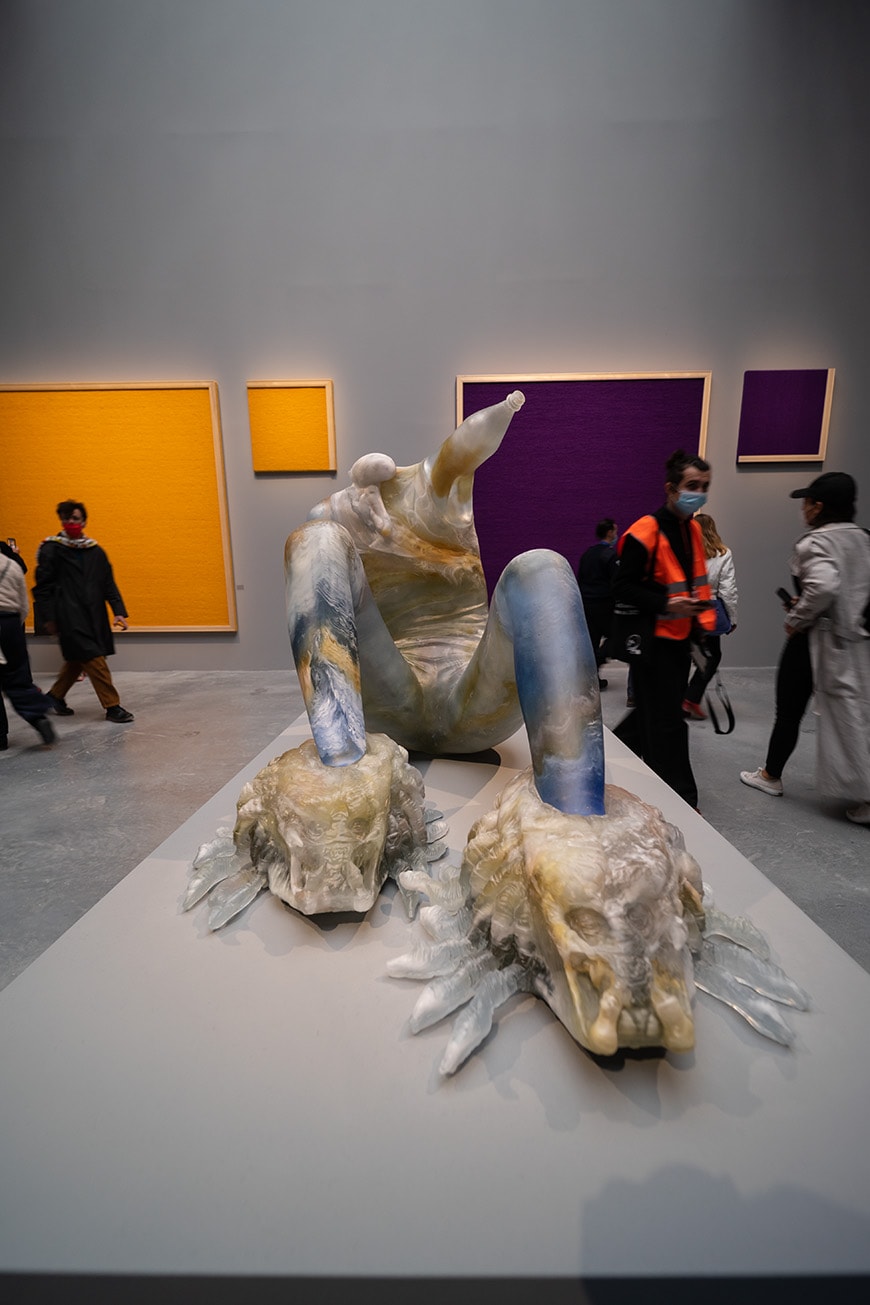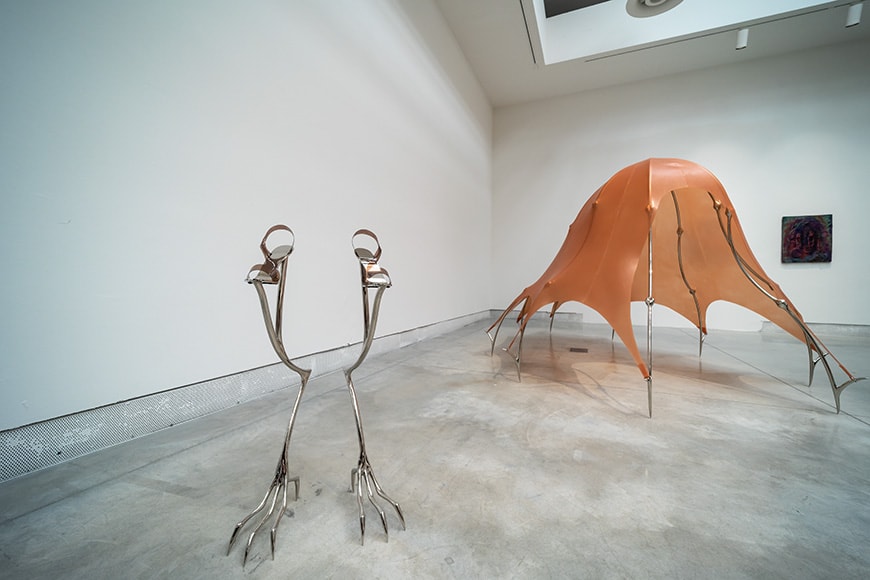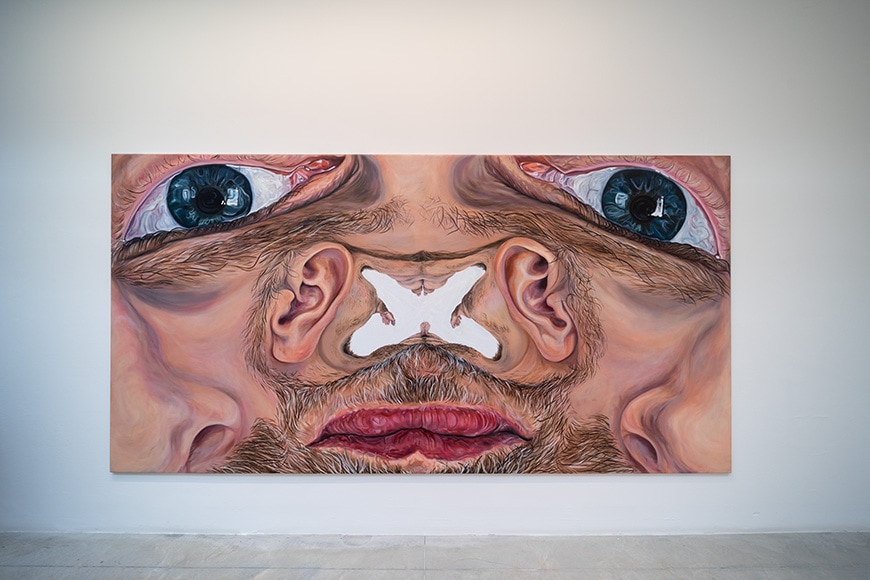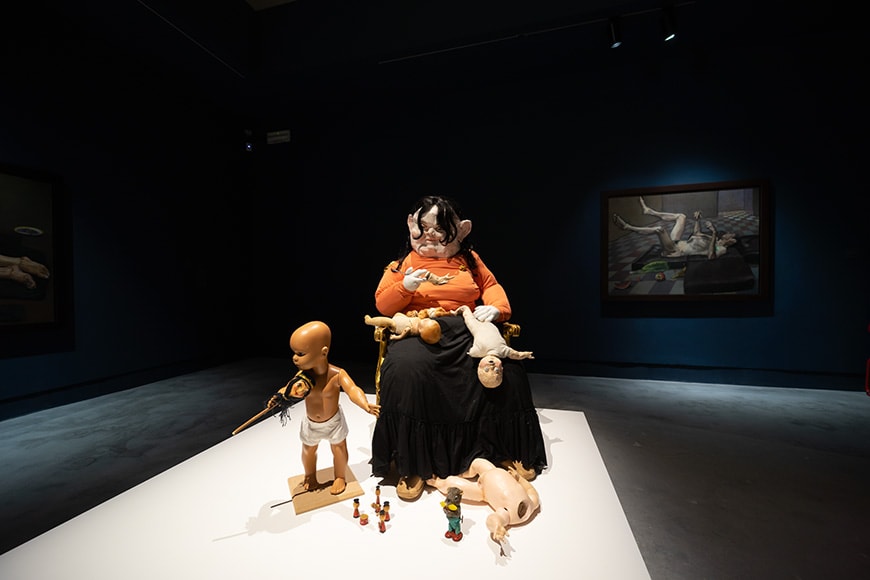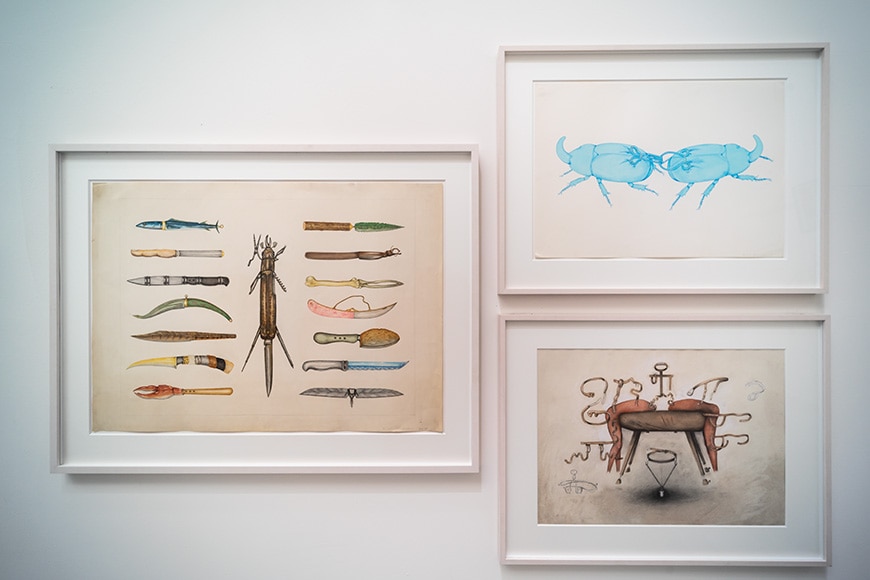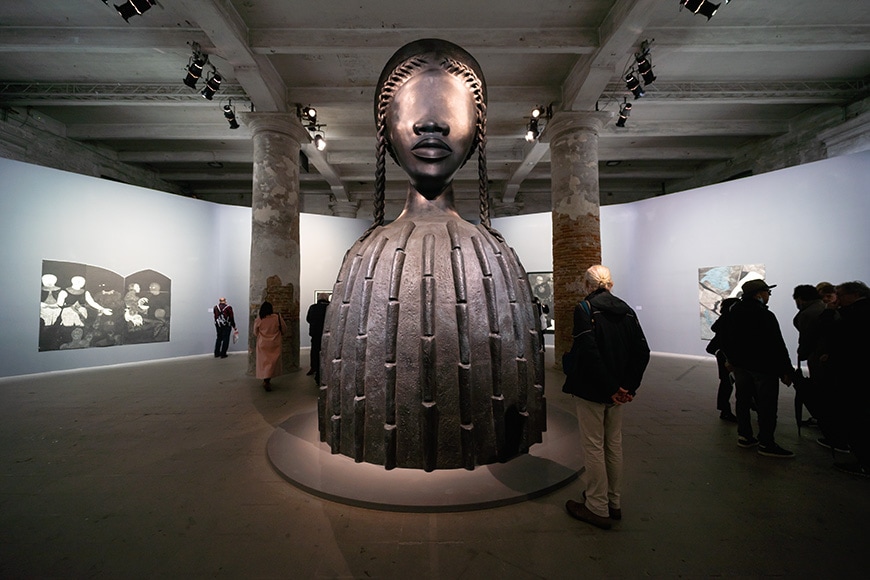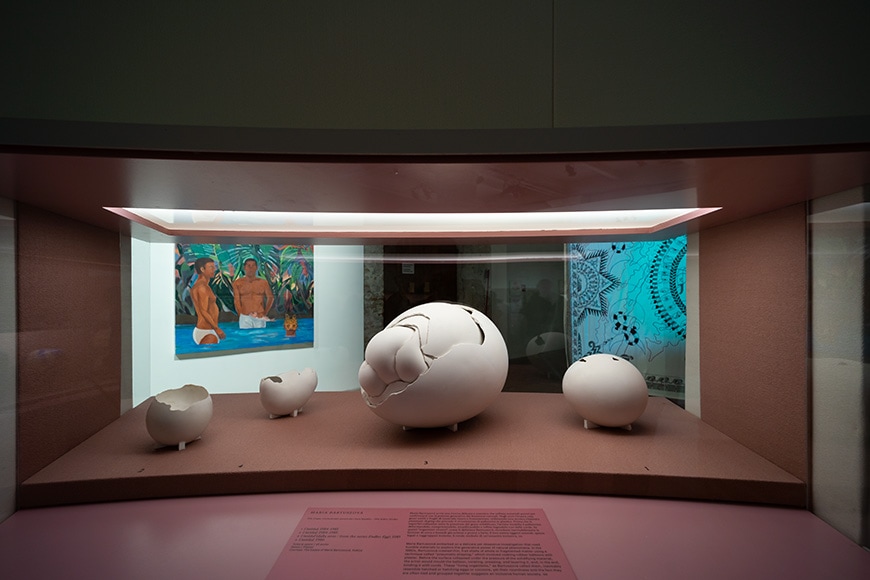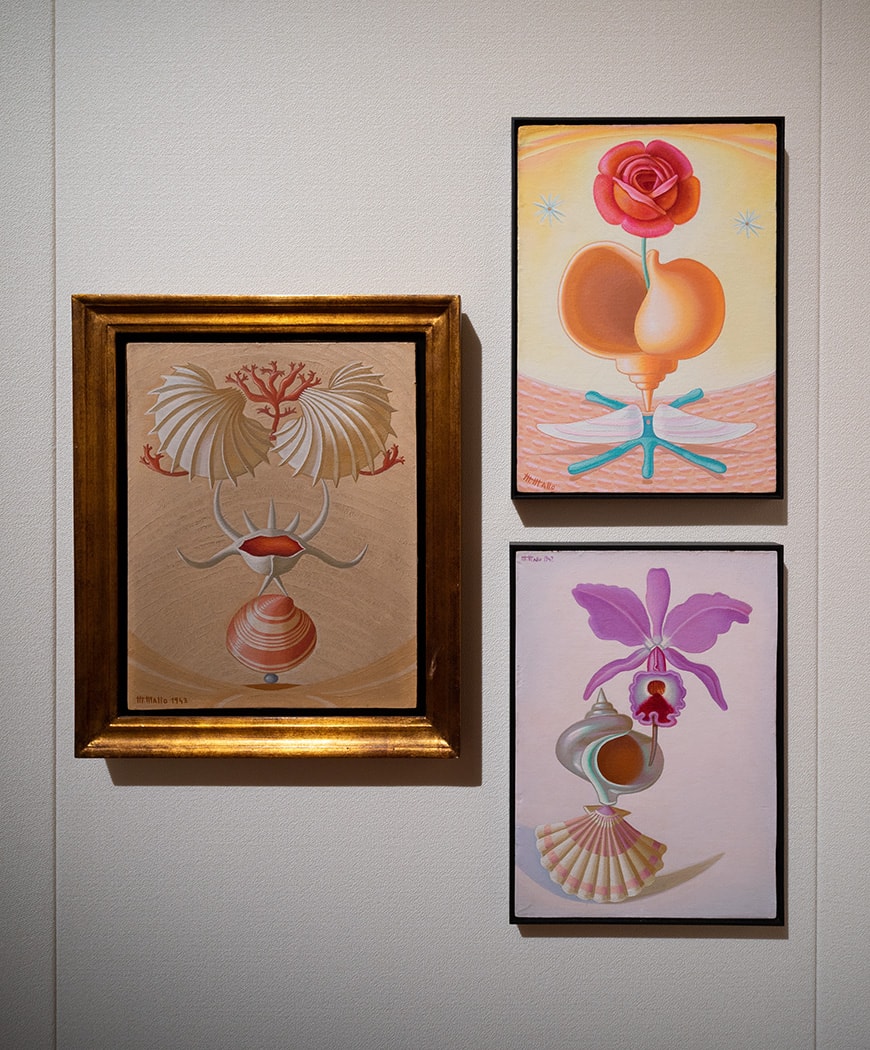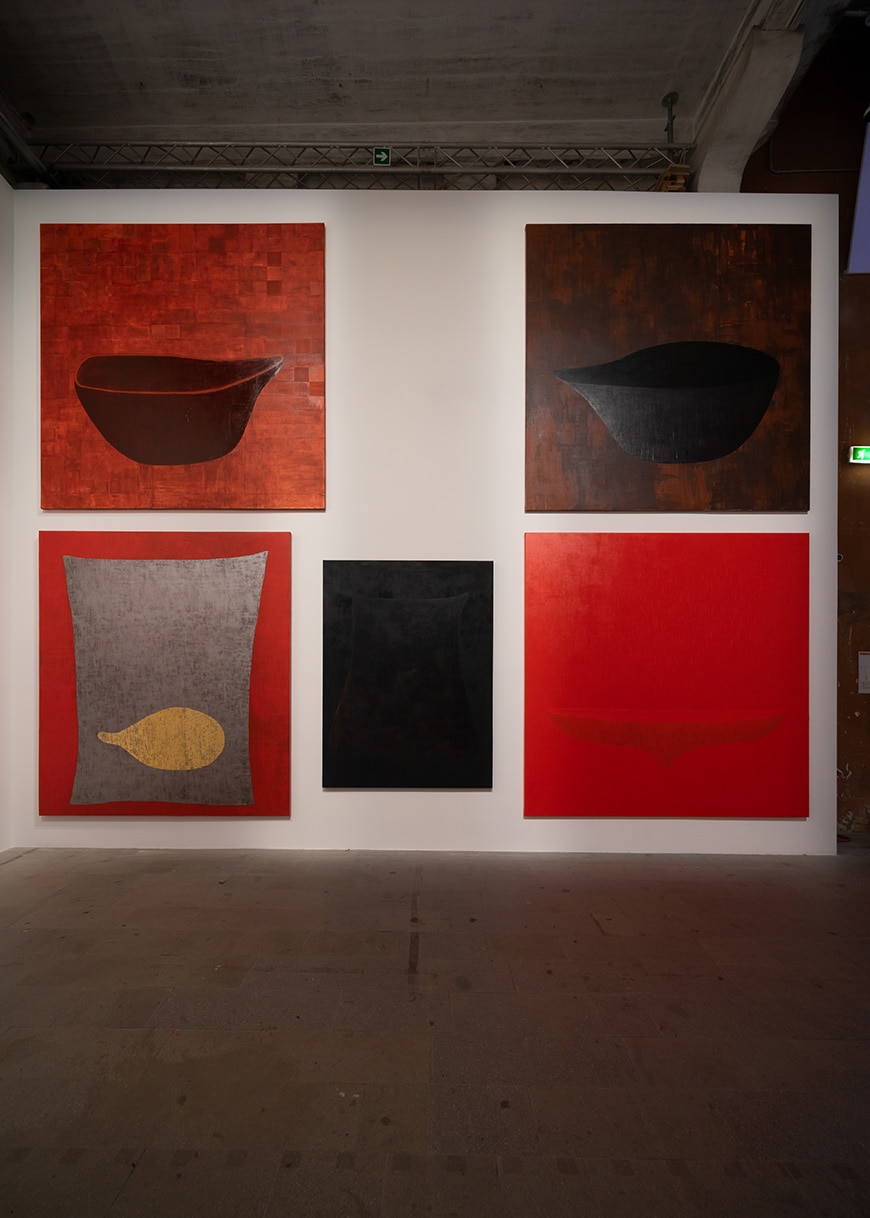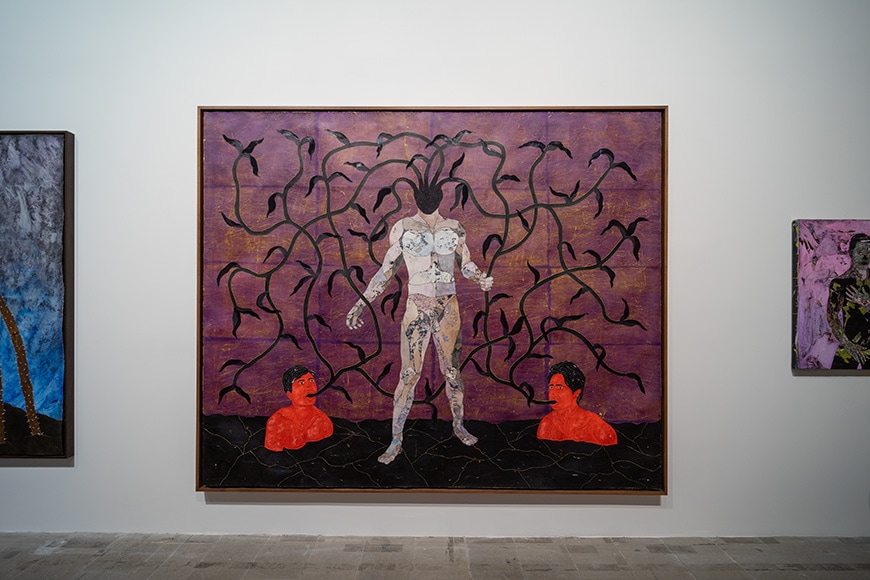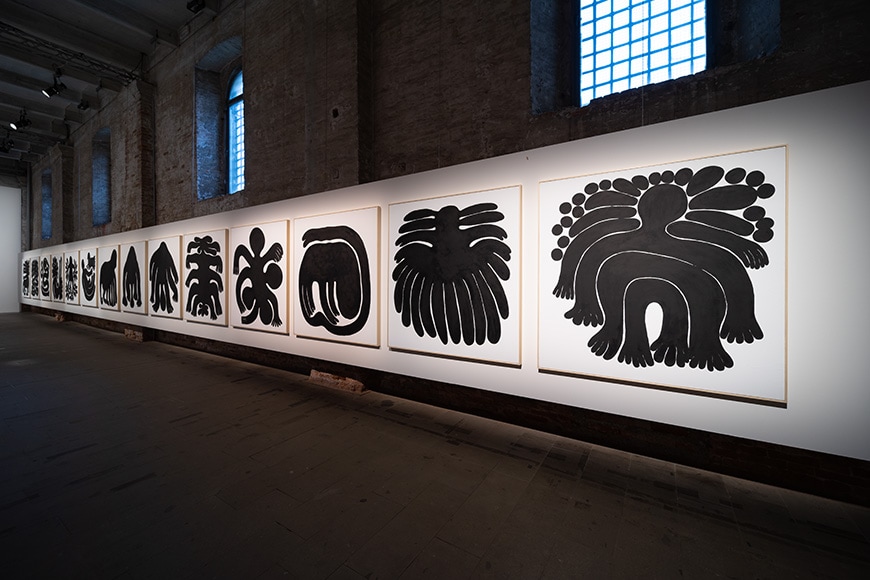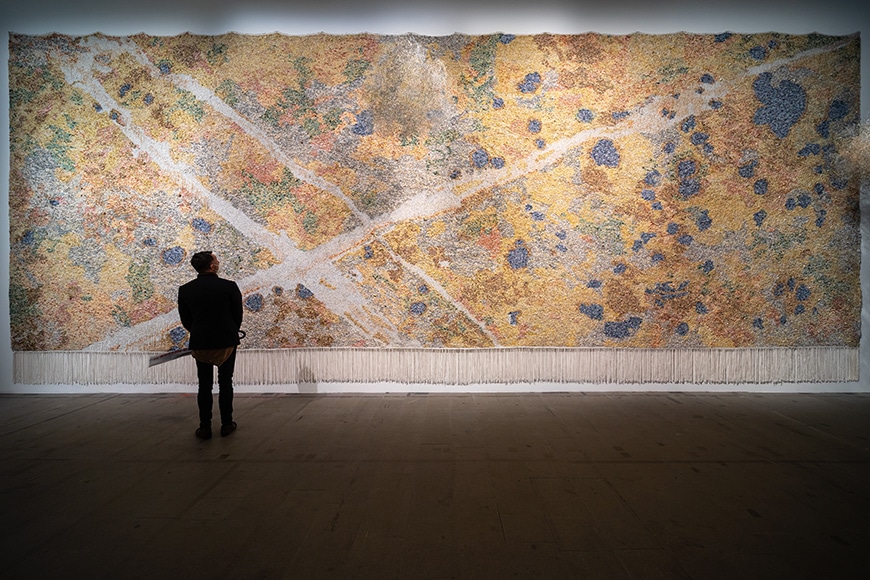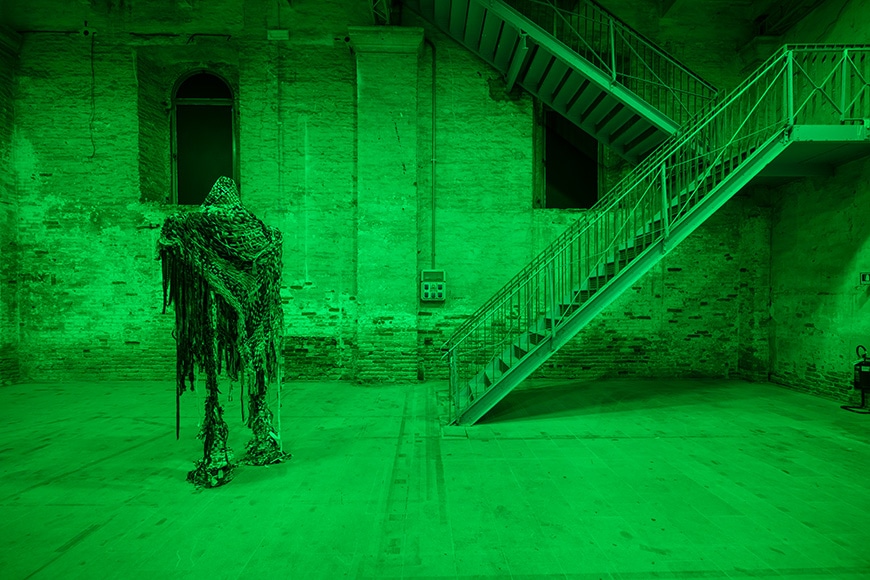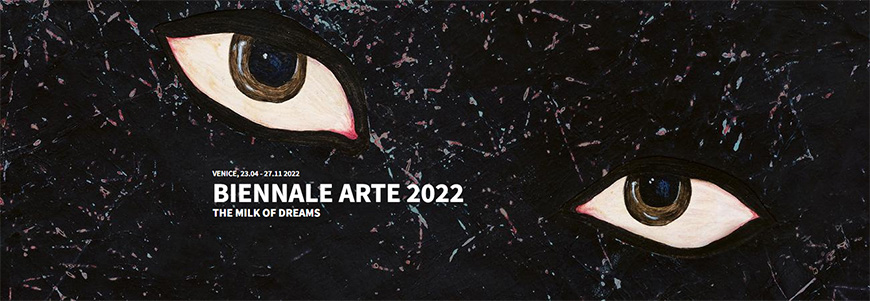The 2022 Venice Art Biennale main exhibition at Giardini & Arsenale
Sandra Mujinga, Sentinels of Change, 2021, The Milk Of Dreams exhibition at the Venetian Arsenale, installation view. Photo © Riccardo Bianchini / Inexhibit.
The Milk Of Dreams main exhibition at Giardini & Arsenale – 2022 Venice Art Biennale
The long-awaited 59th Venice Art Biennale opened to the public on April 23, 2022, after a one-year delay due to the pandemic. Judging from the press preview days- in which large crowds queued to enter the national pavilions and the core exhibition curated by Cecilia Alemani in the Central Pavilion at Giardini and the Corderie space at the Arsenale – this edition of the Biennale is already a huge success.
The exhibition ‘The Milk of Dreams’ is inspired by a 1950s anthology of illustrated stories by British surrealist artist Leonora Carrington. Carrington’s book features dreamlike and surreal tales, populated by hybrid and sometimes monstrous characters, in which imagination and irony are used as means to reinvent reality, and from which emerges the idea that everyone can transform into a different self.
Not unexpectedly, ‘The Milk of Dreams’ features a variety of ideas, artistic approaches, and points of view; it’s a very “physical” exhibition in which bodies – mutants, hybrids, fragmented, celebrated, or transfigured – are at the center of the artists’ investigations.
The pressing issues of our time, such as the global experience of the pandemic with the consequent social distancing and the fears fueled by the health and environmental crisis, have been at the center of a long-distance conversation between Cecilia Alemani and the invited artists, together with other major themes of our time, such as how the definition of human is changing and how urgent it is to put an end to the anthropocentric vision of the world in order to build a new communion with our planet.
Three major thematic areas “hold together” the exhibition: the representation of bodies and their metamorphoses, the relationship between individuals and technology, and the relationship between bodies and the Earth.
In the exhibition, five thematic capsules link contemporary and past works, bringing out references between generations of artists who lived in different times. For the first time in over 120 years, the art exhibition of the Biennale features a majority of female artists and non-binary people among the exhibitors, a conscious choice that intends to downsize the central male role in the history of art.
Below, you can see a, very personal, selection of works on view in the two venues of Alemani’s core exhibition: the Central Pavilion at the Biennale’s Gardens and the Corderie Gallery at the Venetian Arsenal.
The Milk of Dreams exhibition – Central Pavilion, Giardini della Biennale
All photos © Riccardo Bianchini / Inexhibit.
Katharina Fritsch (1956, Germany), Elephant, 1987, polyester, wood, paint.
Andra Ursuta (1979, Romania), Predators ‘R Us, 2020, lead crystal.
The disquieting sculptures of Andra Ursuta combine parts made from casts of his own body with everyday objects.
Rosemarie Trockel (1952, Germany), knitted wool paintings.
Rosemarie Trockel’s ‘knitted paintings’, machine-made in the 1980s and presented as if they were oil paintings, express the artist’s involvement in issues relating to female work and the devaluation of manual labor.
Julia Phillips (1985, Germany), Veiled Purifier, 2021-2022, ceramic, stainless steel, fabric.
In the works of Julia Phillips the idea of the body, which is absent, is suggested by objects such as buckles, belts, and masks that allude to the control of power.
Hannah Levy (1991, USA), Untitled, 2021, nickel-plated steel and silicone.
Hannah Levy creates “alien” objects by exaggerating or distorting their proportions, reviving Surrealism’s fascination for the disturbing.
Jana Euler (1982, Germany), Venice Void, 2022, oil on canvas.
Euler’s work is centered on the grotesque and monstrous representation of human and animal figures; the bodies are represented in a distorted, almost cartoon-like fashion.
Paula Rego (1935-2022, Portugal), Gluttony, 2019, from the series “The Seven Deadly Sins”, papier-mâché, gouache, wood, PVC, metal, cotton, tulle, and other kinds of fabric.
Combining Portuguese fairy tales with autobiographical references, the powerful domestic scenes portrayed by Paula Rego speak to us of human relationships and the experience of women in a world of conflict and oppression.
Paula Rego, Sit (1994) and Sleeper (1994), pastel on paper mounted on aluminum.
Ulla Wiggen (1942, Sweden), painting from the “Iris” series, acrylic on canvas.
Through her Iris paintings series (2016, ongoing) – which includes dozens of eye irises made with a technique that requires great technical expertise.
Birgit Jurgenssen (1949-2003, Austria), Untitled (1974), Coconut Crab Fight (1972), Untitled/To Vault Over the Buck (1979), color pencil on handmade paper.
Ambra Castagnetti (1993, Italy), Dependency, 2022, ceramic, steel. bricks, wheels.
The Milk of Dreams exhibition – Corderie dell’Arsenale
All photos © Riccardo Bianchini / Inexhibit
Simone Leigh (1967, USA), Brick House, 2019, bronze. Simone Leigh won the Golden Lion award for the best Golden Lion for the Best Participant in the International Exhibition “The Milk of Dreams”. In the background: various collagraphies by Belkis Ayón (1967-1999, Cuba).
Gabriel Chaile (1985, Argentina), Pedro Chaile, 2022, metal structure, adobe, and bricks.
Influenced by the culture of pre-Columbian civilizations, Chaile creates large anthropomorphic sculptures like the five large terracotta ovens that he specially made for the ‘The Milk of Dreams’ exhibition.
Niki de Saint Phalle (1930-2002, France-USA), Gwendolyn, 1966-1990, painted polyester resin on a metal base.
Time Capsule: A leaf, a pumpkin, a shell, a net, a bag, a shoulder strap, a saddlebag, a bottle, a pot. In Cecilia Alemani’s Art Biennale 2022, time capsules are micro-exhibitions focused on various artists of the past.
This time capsule – which contains works by Ruth Asawa, Maria Bartuszova, Aletta Jacobs, Maruja Mallo, Maria Sibylla Merian, Sophie Tauber-Arp, Toshiko Takaezu, Bridget Tichenor, and Tecla Tofano – is inspired by Helen Elizabeth Fisher, an American anthropologist who believes that the capacity for human invention arises from the act of collecting and taking care. Therefore, it features works that explore the concept of containing things, like bags, eggs, and bowls.
Ruth Asawa (1926-2013, USA), (right to left) Untitled (1952), iron wire; Untitled (1958), brass wire; Untitled (1959), nickel-plated copper wire; Untitled (ca. 1960), copper wire; Untitled (1962), brass wire; and Untitled (1962), brass wire.
Maria Bartuszova (1936-1996, Slovakia), various works, 1984-1986, plaster.
Maruja Mallo (1902-1995, Spain), Naturaleza viva VII (1942), Naturaleza viva VIII (1942), and Naturaleza viva XIV (1943), oil on masonite.
Pinaree Sanpitak (1961, Thailand), (clockwise, from top left) Offering Vessel II (2021) acrylic, paper on canvas; Offering Vessel (2021) acrylic, paper on canvas; Breast Vessel in the Reds (2021) acrylic, pencil, feathers on canvas; Body Lyrics III (2019), acrylic on canvas; The Body and the Gold Breast (2021), acrylic, gold leaves on canvas.
Pinaree Sanpitak creates large paintings on which she outlines curvilinear shapes inspired by those of the human body.
Felipe Baeza (1987, Mexico), Por caminos ignorados, por hendiduras secretas, por las misteriosas vetas de troncos recién cortados, 2020, ink, Flashe, acrylic, varnish, twine, egg tempera, cut paper collaged on paper.
Felipe Baeza’s works depict scenes of metamorphosis and human bodies in the transformation between human and vegetable.
Delcy Morelos (1967, Colombia), Earthly Paradise (2022), mixed media comprising soil, clay, cinnamon, powder cloves, cocoa powder, cassava starch, tobacco, copaiba, baking soda, and powdered charcoal.
In the installation at the Arsenale, Morelos leads us into a labyrinth of earth. Its walls scented with spices and herbs seem to warn and remind us that nature is alive and no special rights to control it are granted to humans.
Solange Pessoa (1961, Brazil), Sonhiferas (2020), oil on canvas.
Tau Lewis (1993, Canada, Vena Cava, 2021, recycled leather, acrylic paint, coated nylon, and steel armature.
Igshaan Adams (1982, South Africa), Bonteheuwel / Epping, 2021, wood, painted wood, plastic, bone, stone and glass beads, seashells, polyester and nylon rope, cotton rope, link chain, wire, and cotton twine.
Adams’ large tapestries, made with various materials, are inspired by the floor patterns of the houses of friends and neighbors in Cape Town; sometimes they reproduce trajectories that connected places and communities that the government of South Africa, in an era of racial segregation, wanted to keep separate.
Time Capsule- Seduction of the Cyborg
Louise Nevelson (1899-1988, Ukraine-USA), Homage to the Universe, 1968, black painted wood.
Lavinia Schulz (1896-1924, Germany) and Walter Holdt (1899-1824, Germany), dance costumes, 1924.
A dancer during the years of the Weimar Republic, Schulz invented a new expressionist style that broke with codified rules. With her husband, Walter Holdt, she created costumes that transformed dancers into hybrid works of art inspired by nature and the animal kingdom.
Maria Vassilieff (1884-1957, Russia), Costume Arlequine for Bal Banal, 1924, gelatin silver print.
Tatsuo Ikeda (1928-2020, Japan), (left to right) Brahman: Chapter 3: Floating Sphere-2 (1977), Brahman: Chapter 3: Floating Sphere-6 (1978), and Brahman: Chapter 4: Helix Granular Movement-4 (1979), acrylic on paper.
Tishan Hsu (1951, USA), Breath, 2021, UV print, silicone on wood.
The hybridization of the human body and technology is the subject of Tishan Hsu’s works. His most recent works are made with innovative manufacturing techniques and technological materials such as silicone and alkyd resins.
Sandra Mujinga (1989, the Democratic Republic of the Congo), Sentinels of Change, 2021, installation view.
In this installation, immersed in an alienating green light, Mujinga has arranged four hybrid and mimetic figures that seem to have evolved to survive a dystopian contemporaneity.
Barbara Kruger (1945, USA), Untitled (Beginning/Middle/End), 2022, site-specific installation, print on vinyl.
Precious Okoyomon (1993, UK), To See the Earth before the End of the World, 2022, installation.
copyright Inexhibit 2024 - ISSN: 2283-5474

